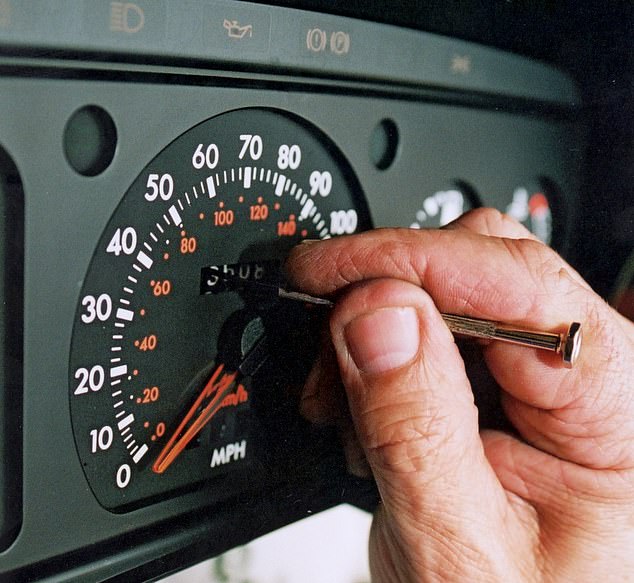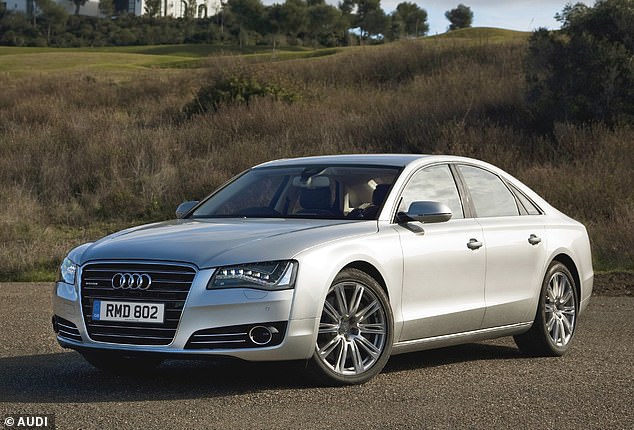‘Clocking’ is an issue many drivers think disappeared in the 1990s.
Having been prevalent for over two decades when analogue clocks were easier to wind back, most people assume the fraudulent activity was wiped out when car manufacturers switched to digital odometers that are more difficult to tamper with.
But that’s not the case.
In recent years, mileage adjusting has reared its ugly head and become an increasing problem for the motor industry and the nation’s drivers.
A rise in clocking has been driven by – as per tradition – fraudsters wanting to inflate the price of used cars but also a greater demand for mileage tampering linked to the increased popularity of finance and leasing deals, which are bound by mileage limits.
This has spawned the availability of new – legally available – technology and devices which make it almost impossible to trace if a vehicle’s mileage has been altered, not only artificially inflating the value of a car but also making it inherently more dangerous.
And exclusive data shared with Daily Mail and This is Money has found examples of vehicles that have had almost 300,000 miles scrubbed from their records.
We reveal the 15 used motors with the worst cases of clocking identified in the last 12 months, explain why there has been such a sharp increase in mileage tampering, and how it’s being driven by a new generation of adjusting technology.

If you thought clocking was a thing of the past, think again! New technology and unscrupulous online providers using loopholes in the legal system to offer mileage-blocking services has seen it make a return – and up to 300k is being wiped off the history of some motors
Vehicle history checking platform carVertical has shared with us the most extreme cases of clocked motors it has identified in the last 12 months.
This is based on the hundreds of thousands of reports requested by customers this year when second-hand car buyers carry out their own due diligence on a motor before purchasing.
And it exposes the staggering extent to which unscrupulous sellers are rolling back mileage to inflate value and disguise heavy use.
A 2021-registered Mercedes-Benz Sprinter van tops the records as the most clocked vehicle advertised for sale in the last year.
It was found to have a jaw-dropping 283,141 miles wiped from its odometer.
To put that into perspective, that’s 40 years’ of driving (based on the UK average of 7,100 miles per year in 2024) missing from its record, or the equivalent of driving around the world 11 times.
In fact, carVertical uncovered eight different cars that had over 200,000 miles removed from their records.
A luxury 2013 BMW 5 Series was found to have been clocked to the extent that 275,036 miles had been unaccounted for, while a 2011 Audi A8 executive saloon was also found to have had 235,864 miles removed from its history.

A 2021-registered Mercedes-Benz Sprinter was found to have 283,141 miles wiped from its odometer. To put that into perspective, that’s equivalent of driving around the world 11 times (stock image)

A luxury 2013 BMW 5 Series was found to have been clocked to the extent that 275,036 miles had been unaccounted for (stock image)

CarVertical found a 2011 Audi A8 executive saloon that had 235,864 miles removed from its history (stock image)
| Rank | Make | Model | Date registered | Number of miles rolled back |
|---|---|---|---|---|
| 1 | Mercedes-Benz | Sprinter | 2021 | 283,141 |
| 2 | BMW | 5 Series | 2013 | 275,036 |
| 3 | Audi | A8 | 2011 | 235,864 |
| 4 | Volkswagen | Tiguan | 2011 | 230,965 |
| 5 | Citroën | Jumper | 2015 | 208,312 |
| 6 | Ford | Transit | 2019 | 206,894 |
| 7 | Ford | Mondeo | 2014 | 203,904 |
| 8 | Land Rover | Defender | 1997 | 200,142 |
| 9 | Toyota | Prius | 2010 | 196,829 |
| 10 | BMW | 3 Series | 2012 | 187,879 |
| 11 | Audi | A4 | 2010 | 184,784 |
| 12 | Renault | Master | 2018 | 183,787 |
| 13 | Mercedes-Benz | E-Class | 2015 | 183,629 |
| 14 | Mercedes-Benz | S-Class | 2011 | 183,427 |
| 15 | Skoda | Superb | 2015 | 183,253 |
| Source: carVertical (based on worst examples identified in hundreds of thousands of vehicle checks in the last 12 months) | ||||
All but one vehicle in the top 15 list were produced since 2010, meaning they will have digital odometers that have been adjusted using devices or providers of deceitful businesses.
The only example that’s older is a 1997 Land Rover Defender, which has anologue clocks and therefore been adjusted using more traditional techniques you’d typically associate with clocking.
Every model in this list would have had its mileage tampered with for the sole reason of inflating its value when advertised for sale.
it has been estimated that Britons are being fleeced out of £750million a year by overpaying for used motors that have had their mileage fraudulently adjusted, with the average victim spending £4,750 over the true value of a vehicle.
And it isn’t just premium motors and vans that are being targeted in this way.
A 2011 Volkswagen Tiguan SUV was found to have had 230,965 miles wiped from its odometer and a 2014 Ford Mondeo family car having 203,904 miles unaccounted for.
Of the top 15 most-clocked vehicles identified by the company, carVertical found that four are vans.
It says these are disproportionately targeted for clocking due to the high mileage they clock up being driven for long hours every day.
The data revealed that a Citroen Jumper was the fifth-worst case identified in the last 12 months with 208,312 miles removed, followed by a Ford Transit at number six (207,000 miles deleted), and a Renault Master at number 13 (184,000 erased).
CarVertical’s Matas Buzelis said drivers need to keep an eye out for motor – particularly commerical vehicles – imported from mainland Europe, where clocking is more rife than it is in Britain.
‘Vans and light commercial vehicles are particularly prone to odometer fraud, as these workhorses typically cover far more miles than conventional cars,’ he explained.
‘Interestingly, the Renault Master, which ranked 13th in our list of examples, was imported from Poland, which is where we spot most odometer fraud cases. While odometer fraud is less common in the UK, imported vehicles, especially from mainland Europe, often hide secrets under the bonnet.’

it has been estimated that Britons are being fleeced out of £750million a year by overpaying for used motors that have had their mileage fraudulently adjusted, with the average victim spending £4,750 over the true value of a vehicle
No matter the vehicle type, Buzelis says the financial impact on unassuming second-hand car buyers can be punishing.
‘Unscrupulous sellers use mileage adjusting devices and services to disguise the true condition of cars – sometimes wiping off hundreds of thousands of miles, as we’ve found in our investigation.
‘And for buyers, that means paying more for a vehicle that could break down much sooner than expected.’
Matas says some sellers even go further by editing service records or falsifying MOT certificates to make the doctored mileage appear genuine.
‘The scam can add thousands of pounds to a vehicle’s sale price,’ he warns.
The company says there are precautions used car buyers can take to avoid buying a motor with clocked mileage.
‘First, run the VIN through a full vehicle history check so you can confirm mileage, past damage, theft, and finance status from independent sources.
‘Then look at the mileage graph and make sure today’s reading follows a believable curve.
‘Check the timeline for plate changes, gaps in testing and rapid owner turnover, because those patterns tell a story.
‘Five minutes now can save months of headaches later,’ Buzelis says.
The new age of car clocking – and what is driving it
The rise in vehicle mileage fraud is partly resulting growing swell of providers offering a new generation of hi-tech clocking services that are sold as being ‘undetectable’.
Not only do these cater for dodgy owners and businesses attempting to inflate the value of the cars they’re trying to sell but also provides a means for drivers to avoid financial penalties when they do not own their vehicles outright.
Motorists with financed or leased cars will have agreed to mileage-based restrictions at the start of their contract. These partially determine the monthly price they pay for their vehicles and the predicted value of the motor at the end of the contract term.
Failing to adhere to these limitations can mean that drivers incur costly fines at the end of the contract.
These typically vary from 3p to 50p per mile over the agreed restriction, depending on which lender or provider you use, and the specific make and model of car.
Refusing to pay an excess mileage charge can result in a court appearance, your case being handed to debt recovery agencies adding more costs, and tarnishing your credit rating. You might also be refused lease deals in the future.

We’re now in a new age of car clocking where online companies are providing services that not just tamper with a vehicle’s odometer, it can pause any miles driven from being registered to the motor’s electronic brain, making it almost undetectable for buyers and dealers
Cheap ‘mileage blockers’ – also advertised as ‘mileage freezers’ – are devices sold online that can make it impossible to identify if a car has been clocked, meaning drivers can hide the true mileage accrued from the prying eyes of finance and lease providers.
Instead of winding back a vehicle’s mileage – which is the process most people associate with clocking – they pause it when the car is being driven to suggest it has been used far less than it truly has.
But they don’t only pause the odometer in your car’s clocks behind the steering wheel; they block peripheral modules in modern cars from functioning properly to make clocking undetectable.
This means it stops every new mile driven from registering on the vehicle’s ECU, which is the car’s brain and record holder.
The devices are so advanced that they make it incredibly difficult even for dealers to spot a clocked car.
As such, the scale of the mileage-adjusted models being advertised for sale on the used market remains unclear.
UK sellers of these manipulative products are taking advantage of legal loopholes around clocking devices by caveating that they are ‘for off-road or research use only’ (read more in our boxout below).
However, they are also advertised as ‘totally untraceable’ and ’99 per cent undetectable’, raising serious concerns that fraudsters can use them to falsify a car’s mileage before selling for an unjustly inflated price.
A quick search on Google returns tens of UK-based operators offering mileage blockers that are ‘100 per cent untraceable and safe’.
Despite such claims, use of mileage blockers puts oblivious motorists at huge risk because a vehicle’s parts will often be substantially more worn than the faked mileage suggests they should be.
They are currently advertised online for around £200 to £250 and provide specific attachments for individual car models.
Vehicle data experts at HPI say the practice is particularly shameless because an owner can still provide a complete service record history with bogus mileage that looks genuine and legal.
It also means that there will be no obvious discrepancies in the MOT record when the blocker is used, as miles will be paused rather than reduced, falsely suggesting the vehicle hasn’t been used for prolonged periods.
Already widely available in the US, various businesses across the UK are now selling the devices online with instructions or offering installations courtesy of ‘fully qualified technicians’.
